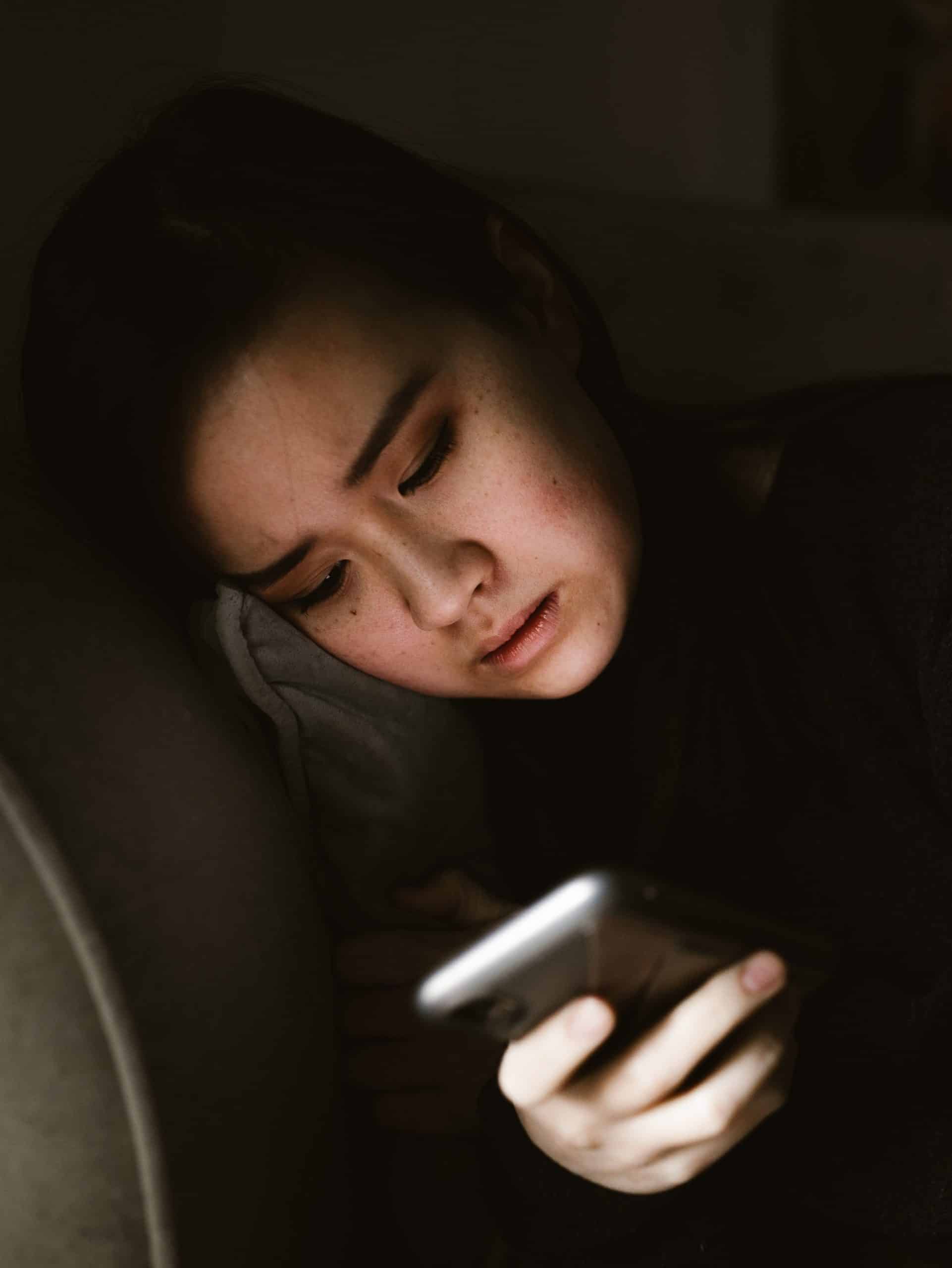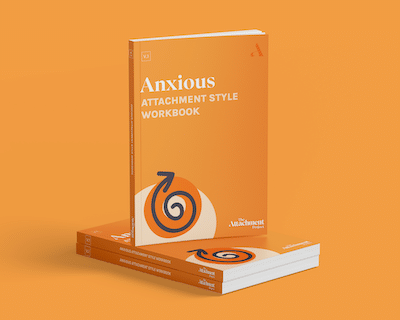Self Regulation Strategies for Anxious Attachment Triggers

Published on July 23, 2021 Updated on July 31, 2023
Understanding how to self regulate our emotions and actions is an essential skill to develop. If you are working towards “earned secure attachment”, think of this as a milestone on that path. Individuals with an anxious attachment style may find self regulation a bit difficult to get used to.
In this article, we will help you understand common relationship triggers for those with an anxious attachment style. Being aware of potential triggers is the first key step necessary to be prepared to manage your reactions to those triggers. We will also give tips on how to healthily self regulate emotions and how to maneuver these difficult situations.
After reading this article, you will be able to answer the following questions:
- What is self regulation?
- How might someone with secure attachment respond to emotional triggers?
- How does anxious attachment develop in childhood?
- Why do anxious children struggle to regulate their emotions in a healthy way?
- How (and why) might an adult with an anxious attachment style respond to situations that trigger them?
- What are common relationship triggers for someone with an anxious attachment style?
- How to self regulate in a healthy way when you have anxious attachment?
Each of us goes through a range of positive and negative emotions every day. Especially when it comes to relationships. Whether they’re healthy and flourishing or slightly struggling, relationships can be emotional roller-coasters. Sometimes the ride is wonderful and your insides lurch in that butterflies-in-your-stomach way, but on other occasions, your emotions can feel overwhelming like the roller-coaster has lost control…
Emotions can be like a compass guiding us in the right direction and towards the right choices in life. Other times they can become so entirely overpowering that we end up responding in unhealthy ways. Understanding how to self regulate our emotions and actions is an essential skill to develop. Though our attachment style may influence our ability to do so.
What is self regulation?
Self regulation is the ability to control our emotions and the actions that we take in response to them. We also want to keep in mind what is appropriate for the situation at hand. The ability to self regulate is the key to successfully maintaining healthy relationships, problem-solving when there’s a conflict, and having a stable sense of self-confidence.
What not many people know is that our ability to control our emotions, as well as how we respond to them, is influenced by our attachment style. Therefore, whereas it’s important to understand when to trust our emotions, it’s equally important to know when our attachment style is influencing how we self regulate.
Secure Attachment Style
Having a secure attachment doesn’t mean that you’re in total control of your emotions. Though securely attached people are able to self regulate healthily. Meaning that they’re probably empathetic and sensitive to other people’s emotions and can set appropriate boundaries.
This makes securely attached people more likely to feel emotionally secure and satisfied in their intimate relationships. They’re comfortable being in a couple, but also secure enough to be by themselves.
Six ways in which a securely attached person might respond to emotion-provoking situations:
- They talk to their loved ones about what they’re feeling
- Write down what they think and feel
- They might try meditation or therapy
- Exercise to relieve stress and increase endorphins
- They practice being aware of their thoughts when they’re emotional
- Remove themselves from an emotional situation if it is becoming uncontrollable
However, the way that someone with an anxious preoccupied attachment style self-regulates might look quite different…
*Just bear in mind that attachment styles are often incorrectly seen as rigid. Even though they do have stable traits, it doesn’t mean that you will automatically fill every criterion because you have this attachment style. Just keep an open mind that some elements might apply to you, but others might not.*

Anxious Attachment Style
How does anxious attachment form in childhood?
People with an anxious attachment style might have grown up in an environment where their caregiver was a bit inconsistent in meeting their needs. Or at least the caregivers didn’t meet the needs in the way that they wanted (as a child). There’s a variety of possible reasons for this.
For example, maybe the caregiver misread the child’s signals. Or perhaps they were unsure about the best parenting style to take. So they switched between being affectionate and reassuring at times, to on other occasions letting the child self-soothe instead.
This would lead to a child that was a bit confused about what to expect in terms of their caregiver. Are they going to respond when they need them? Or are they going to stop being attentive? The child starts to feel anxious and upset.
As a result, they end up self regulating by throwing temper tantrums, becoming impossible to console, and acting very needy. They feel comforted by being close to their caregiver, so acting this way makes it more likely that they will pay attention to them, so their negative emotions will reduce as a result.
Unhealthy ways that adults with anxious attachment style might react to emotionally triggering situations:
- Constantly thinking about their relationship
- Focusing on potential threats to their relationship (whether they exist or not)
- Trying to be as emotionally and physically close to their partner as possible
- Constantly trying to contact their partner
- Using blame or guilt during an argument to get what they want
- Becoming angry, even if this anger is sometimes directed at themselves.

Because anxiously attached adults tend to focus on threats to their relationship, they can become intensely angry at what they see as a danger.
However, their fear of rejection can cause them to hold their anger in and re-direct it towards themselves. This unhealthy self-regulation can cause them to feel resentful towards their partner, but also self-critical, sad, and depressed.
Protest behavior such as this is highly damaging to a relationship, so it’s clear that if someone with an anxious attachment style wants to establish and keep a healthy relationship, then they should learn how to self-regulate in a healthier way.
Self regulation strategies for anxious attachment
Fortunately, with some practice, it is relatively easy to gain control over our emotions. Techniques such as mindfulness, changing how you think, and managing anger in a constructive way can help you self regulate in a healthy way.
Self-regulation means that you manage your emotions and actions in regard to what you want in the long-run. Basically, it means think before you act. This means understanding what triggers you in your relationships, as well as how you typically emotionally respond.
The following might be emotional triggers in a relationship for someone with anxious attachment:
- A partner behaving inconsistently
- When a partner seems distant or distracted
- If a partner forgets important events, such as their birthday or anniversary
- Your partner coming home late
- A partner not messaging back when anticipated
- A partner failing to notice something new (e.g. a new haircut)
Any of these triggers could cause the adult with anxious attachment to become over-emotional in their attempts to re-establish a connection with their partner. This could look like creating an argument or being overly dramatic to try and get their attention.
What does healthy self-regulation when you’re anxiously attached look like?
- Resisting big emotional reactions to upsetting circumstances
- Calming yourself down when you become overly stimulated
- Managing your frustration if your partner’s plans change
- Handling a conflict without becoming aggressive or overly angry
Four tips on how to self regulate when you’re anxiously attached:
1. Manage anger
A functional way to control anger would be to deal with it in a more constructive way because this would help their relationship strengthen and grow.
Instead of holding your anger in and directing it towards yourself, or else allowing it to explode at your partner, you recognize that you’re starting to feel angry and clearly communicate it to your partner.
Here are three things that someone with an anxious attachment style could say to their partner when upset:
“I’m upset, and here’s why ___________. You might struggle to understand, but for some reason, it really bothers me.”
“I feel hurt. I know that you probably didn’t intend that, but I’m worried about our relationship because of ___________.”
“Would you mind staying in more frequent contact with me so that this doesn’t happen again?”
It might be useful to be aware that whereas these scripts would be effective with a securely attached partner, an avoidant attached partner might find them triggering because they fear closeness to another person.
A securely attached person might be the ideal match for someone with an anxious attachment style. They’re able to understand their partner’s needs and therefore can help to regulate their partner’s emotions.
Because self-regulation involves taking a breather between a feeling and an action, there are a few techniques that can help you to focus more on what’s going on inside your mind and body before you regulate your emotions in an unhealthy way:
2. Practice mindfulness

This technique allows us to take a breath and place space between what we feel and how we immediately react to these feelings. Mindfulness is the ability to be aware and present of where we are and what we’re doing.
With practice, it will allow you to feel calmer and more relaxed instead of becoming aggressive, clingy, or needy. If you would like some tips on how to practice mindfulness, then this guide from Mindful might help.
3. Change your thought patterns
Also known as cognitive reframing, this technique helps to improve your self-regulation abilities by changing how you think. You could do this by anticipating your negative thoughts and emotions and writing them down.
Next, try to challenge these thoughts by examining evidence to the contrary. For example, someone with an anxious attachment style might think “If I let my partner know how I really feel, then they’ll leave me.”
Think back to a time when you did let your partner know how you felt – did they leave? Probably not, right? So, once you realize this, you can make a healthier replacement thought for your negative one.
It might sound like “I let them see what I felt in the past and they’re still here.” This will help you to regulate your negative emotions and thoughts based on the reality of your relationship.
4. Try therapy
Therapy is a great way for you to figure out your unhealthy ways of self regulating as well as why you’re doing it.
Together with a therapist, you can work through your attachment triggers and brainstorm some healthy ways of dealing with your emotions that won’t damage you or your relationship. We offer attachment repair groups and online courses to help you move forward.
Are you wondering what type of therapy would work best for you and your attachment style? This guide from the American Psychological Association can help you to choose.
If you prefer to go the route of a workbook, we recently released our first series of attachment style digital workbooks.

Anxious Attachment Digital Workbook
If you feel anxious in your relationships and often doubt yourself, this book can be the step you need to begin your journey to positive change!
Our anxious attachment style digital workbook includes:
- 204 pages and 28 practical exercises
- How anxious attachment affects you in over 10 different areas of life
- 8 case studies on anxious attachment
- Groundbreaking and up-to-date research on anxious attachment
- Section recaps and areas for reflection











 Get mental health tips straight to your inbox
Get mental health tips straight to your inbox








